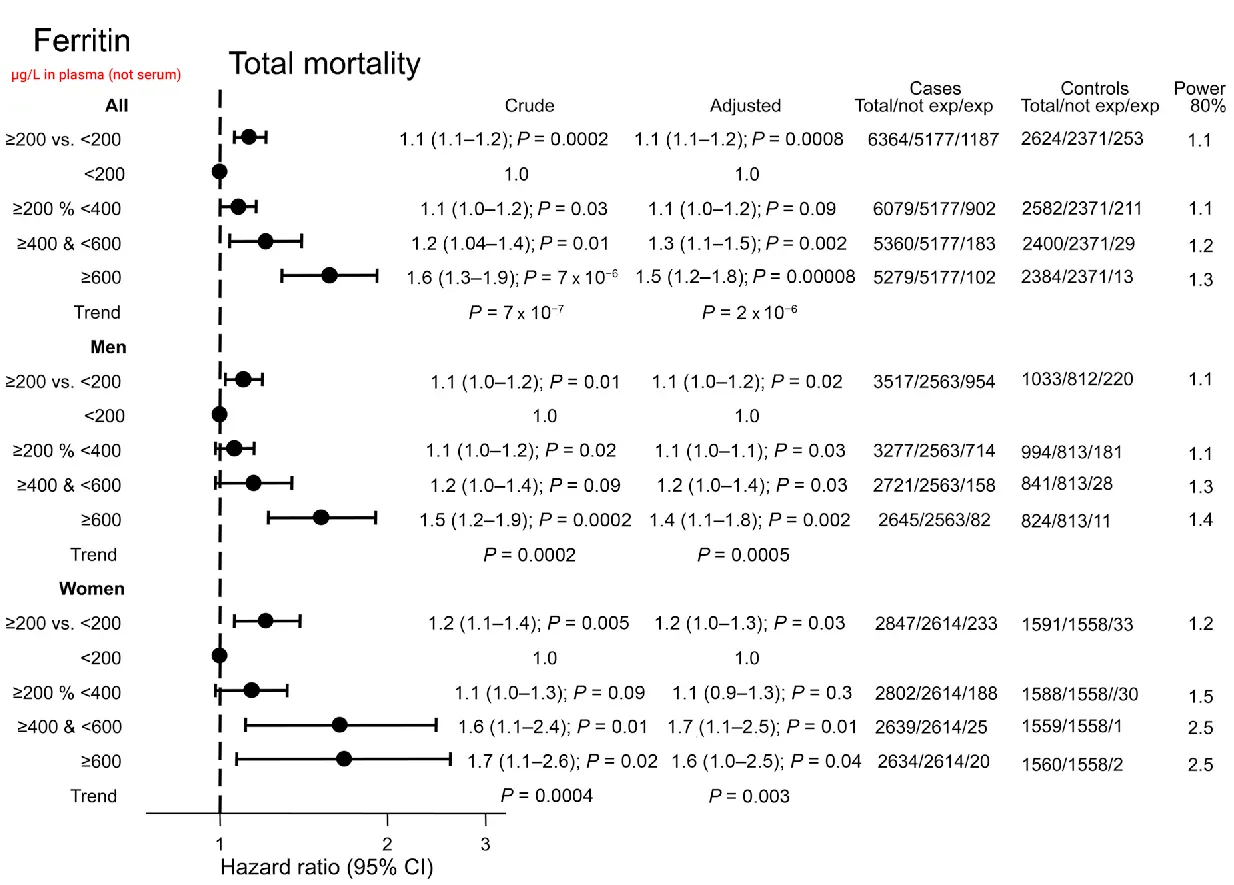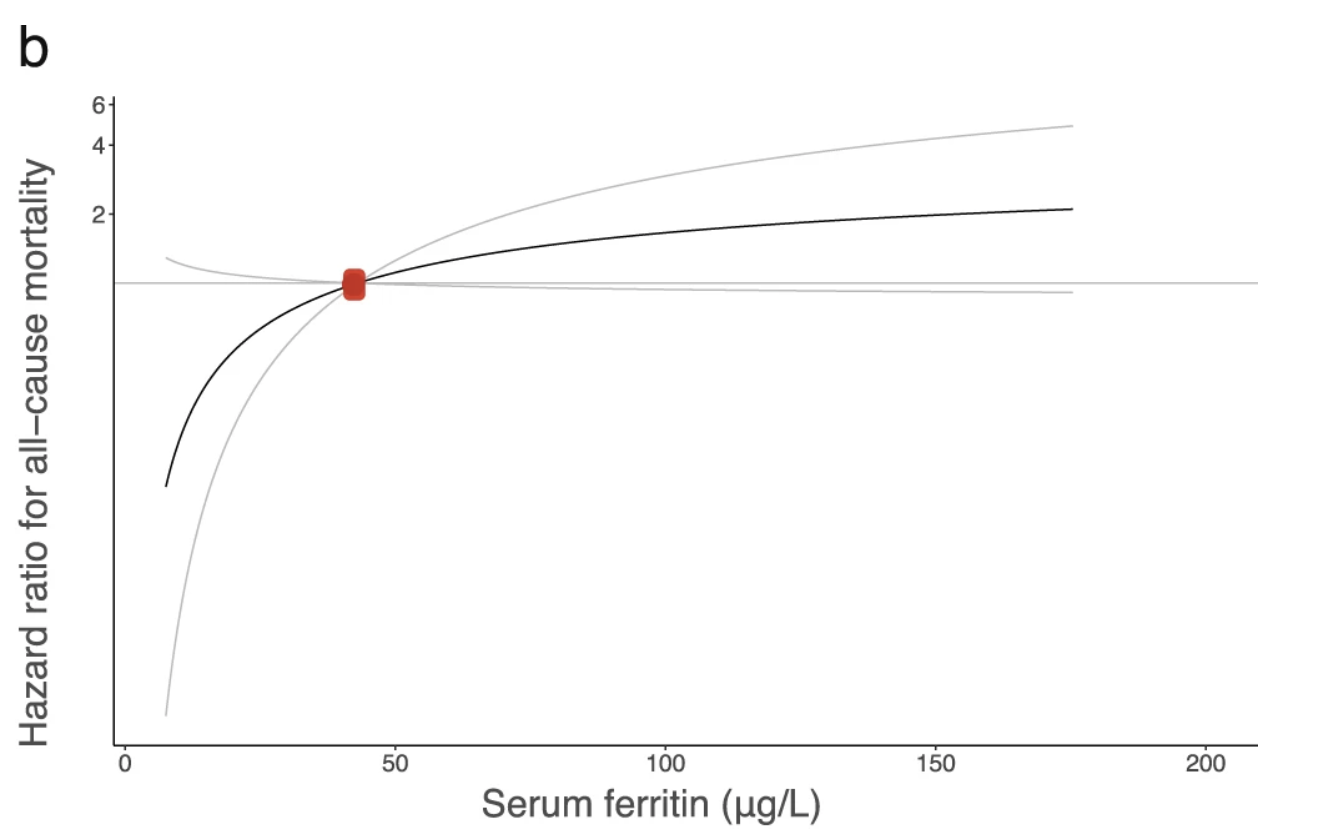Ferritin in Serum
The most sensitive marker of iron storage and also an indicator of inflammation.
Also known as:
S-ferritin
.Do not confuse with serum Iron (Fe).
Video explainer of this page
Ferritin ranges for
Interpret your result
"Normal" lab range for Ferritin is between 22 and 500 µg/L for males:
0
22
500
Symptomatic hemochromatosis was associated with Ferritin above 500 µg/L:
0
500
Unexplained fatigue and weakness was associated with Ferritin below 50 µg/L:
0
50
Hair loss was associated with Ferritin below 40 µg/L:
0
40
70
Restless Legs Syndrome was associated with Ferritin below 75 µg/L:
0
75
Increased all cause mortality was associated with Ferritin above 194 µg/L in males:
0
194
Optimal range
Optimal range for Ferritin seems to be between 60 and 110 µg/L:
0
40
60
110
200
This isn’t medical advice. Consult your healthcare provider.
Possible reasons for high Ferritin:
Possible consequences from high Ferritin:
- High ferritin only becomes symptomatic when levels exceed 500 µg/L. Symptoms include:
Unexplained fatigue and weakness
Joint pain
Darkening of the skin / skin pigmentation
Abdominal pain typically from the liver
Cardiac arrhythmias
Weight loss
Diabetes due to iron accumulation in the pancreas
Loss of libido and impotence
How to lower Ferritin:
- It's important to determine the cause of elevated ferritin levels. The interventions outlined below are only for addressing iron overload:
Images:

Ferritin was associated with all cause mortality
Model 5 is the fully adjusted model. Significant results in bold
5,471 participants
Community dwellers aged ≥52 years from England.
Dataset: English Longitudinal Study of Ageing

High ferritin was associated with moderate rise in mortality
Plasma ferritin cannot be reliably converted to serum ferritin.
8,988 participants
Randomly selected Danish population 20 to 80 years old followed up for 23 years.
Dataset: The Copenhagen City Heart Study

High ferritin was associated with moderate rise in mortality
257,953 participants

Ferritin was not associated with all-cause mortality
However, all-cause mortality was inversely associated with transferrin saturation (%) in men.
5,695 participants
50 years or older men and postmenopausal women.

About the site author
My personal mission is to extend human lifespan by collectively adding 1 million years to people's lives.
Zsolt SzaboSoftware Engineer, Biohacker, and Consultant for Longevity Clinics.
Please send me studies and feedback.
Any feedback is welcome at .
I am particularly interested in research on biomarkers linked to all-cause mortality or optimal reference ranges.